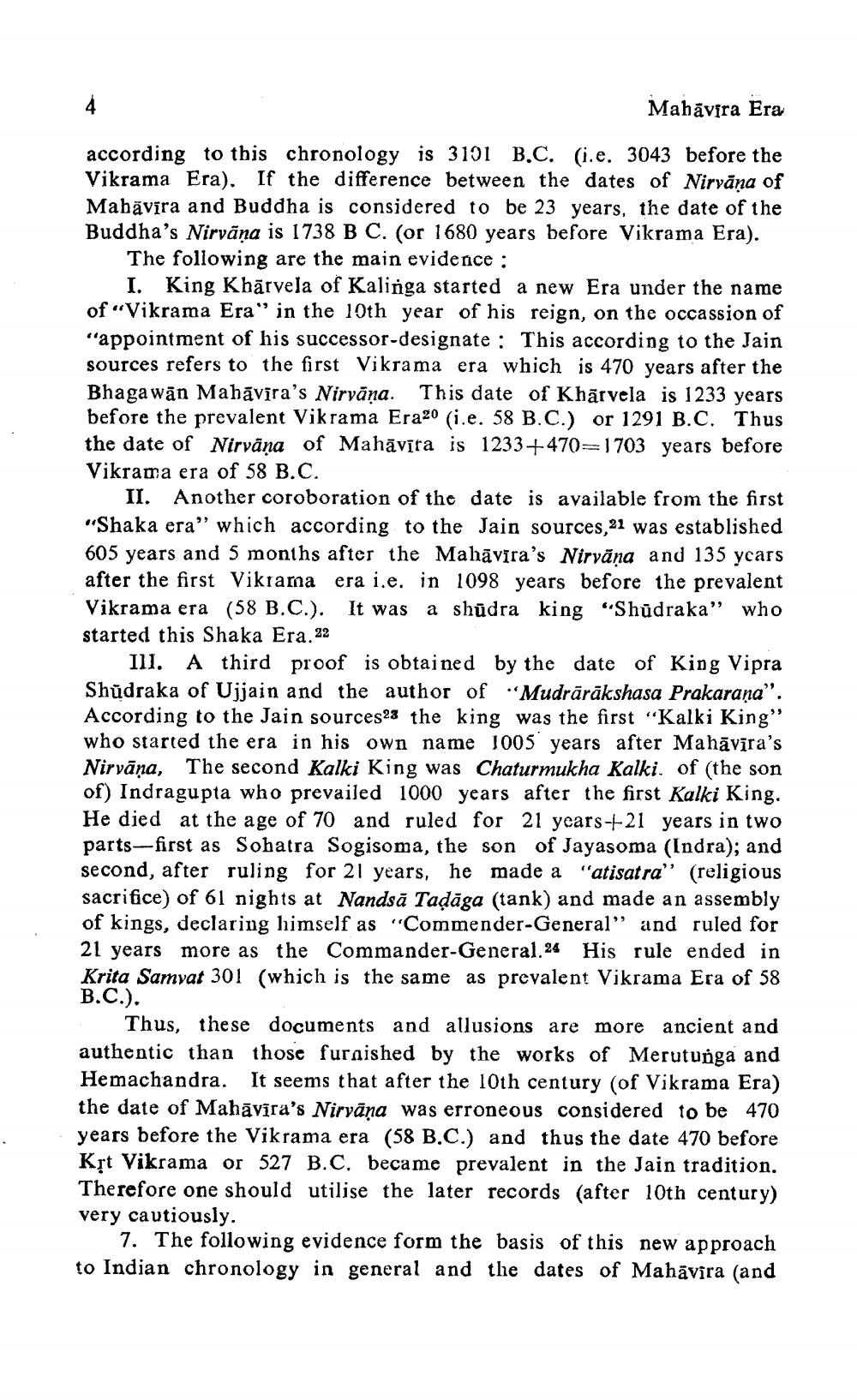________________
Mahāvsra Era
according to this chronology is 3101 B.C. (i.e. 3043 before the Vikrama Era). If the difference between the dates of Nirvāna of Mahävira and Buddha is considered to be 23 years, the date of the Buddha's Nirvãna is 1738 BC. (or 1680 years before Vikrama Era).
The following are the main evidence :
I. King Khārvela of Kalinga started a new Era under the name of Vikrama Era" in the 10th year of his reign, on the occassion of "appointment of his successor-designate: This according to the Jain sources refers to the first Vikrama era which is 470 years after the Bhagawan Mahāvīra's Nirvana. This date of Khārvela is 1233 years before the prevalent Vikrama Era20 (i.e. 58 B.C.) or 1291 B.C. Thus the date of Nirvana of Mahāvīra is 1233 +470=1703 years before Vikrama era of 58 B.C.
II. Another coroboration of the date is available from the first "Shaka era" which according to the Jain sources, 21 was established 605 years and 5 months after the Mahāvīra's Nirvana and 135 years after the first Vikrama era i.e. in 1098 years before the prevalent Vikrama era (58 B.C.). It was a shūdra king "Shūdraka” who started this Shaka Era.22
III. A third proof is obtained by the date of King Vipra Shūdraka of Ujjain and the author of Mudrārākshasa Prakarana". According to the Jain sources28 the king was the first “Kalki King' who started the era in his own name 1005 years after Mahāvīra's Nirvāna, The second Kalki King was Chaturmukha Kalki. of (the son of) Indragupta who prevailed 1000 years after the first Kalki King. He died at the age of 70 and ruled for 21 years+21 years in two parts-first as Sohatra Sogisoma, the son of Jayasoma (Indra); and second, after ruling for 21 years, he made a "atisatra” (religious sacrifice) of 61 nights at Nandsă Tadāga (tank) and made an assembly
declaring himself as "Commender-General” and ruled for 21 years more as the Commander-General.24 His rule ended in Krita Samvat 301 (which is the same as prevalent Vikrama Era of 58 B.C.).
Thus, these documents and allusions are more ancient and authentic than those furnished by the works of Merutunga and Hemachandra. It seems that after the 10th century (of Vikrama Era) the date of Mahāvīra's Nirvāna was erroneous considered to be 470 years before the Vikrama era (58 B.C.) and thus the date 470 before Kșt Vikrama or 527 B.C. became prevalent in the Jain tradition. Therefore one should utilise the later records (after 10th century) very cautiously.
7. The following evidence form the basis of this new approach to Indian chronology in general and the dates of Mahavira (and




